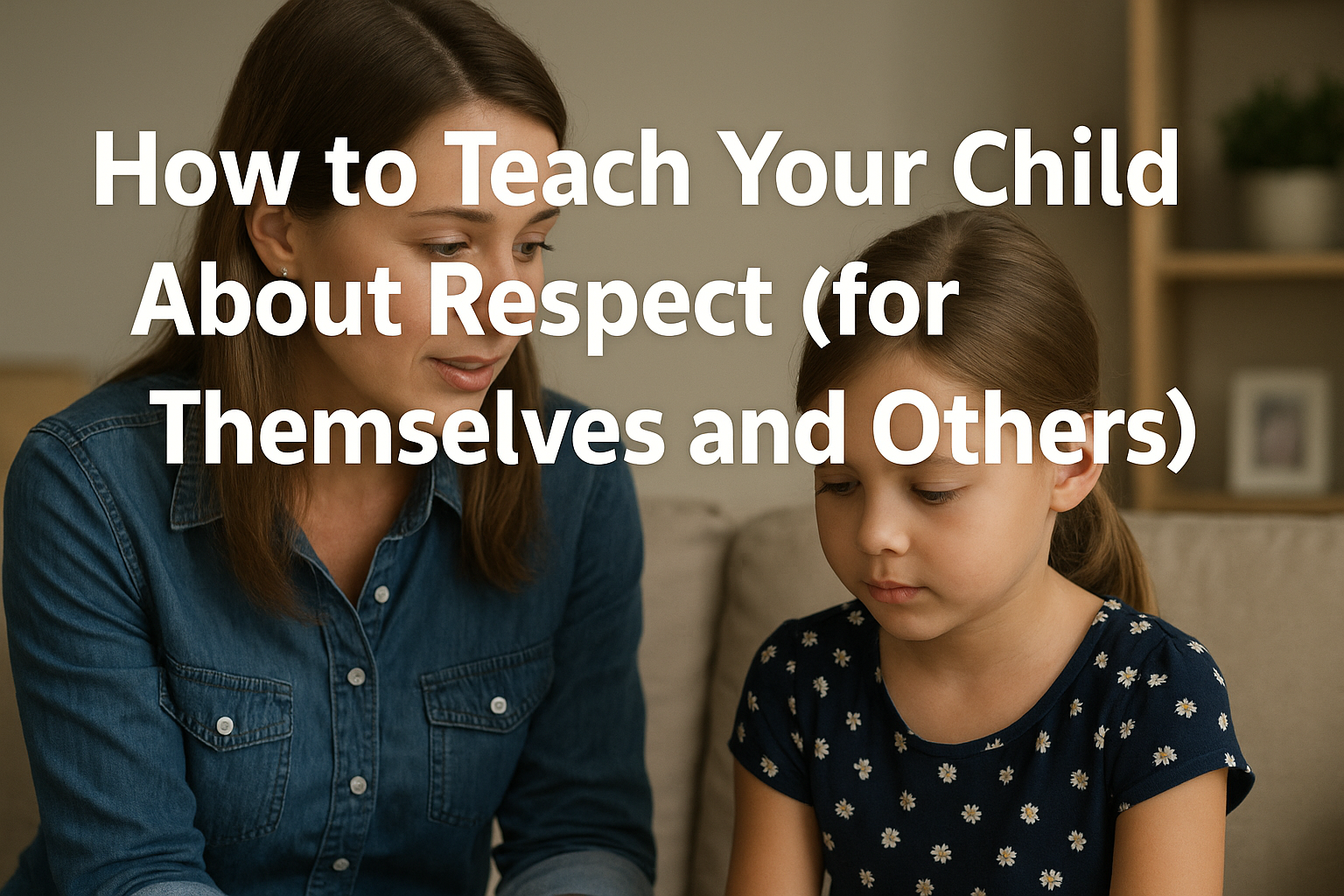Respect is one of the most important values a child can learn. It’s the foundation for healthy relationships, good communication, and a positive sense of self. When children understand what respect looks like—and experience it in their daily lives—they’re more likely to treat others with kindness and stand up for themselves with confidence.
Teaching respect doesn’t require harsh discipline or lectures. It requires consistent modeling, clear expectations, and daily interactions filled with empathy and boundaries.
Here’s how to teach your child about respect—for others, for differences, and for themselves.
What Is Respect?
Respect means recognizing the value and feelings of others—and acting in a way that honors that.
Respect includes:
- Listening when others speak
- Using kind, polite words
- Taking care of shared spaces and belongings
- Honoring rules and boundaries
- Speaking up when something feels wrong
- Treating oneself with care and dignity
Respect isn’t fear. It’s not obedience at all costs. It’s about treating people—including yourself—with consideration and care.
Model Respect in Your Daily Life
Children learn most from what they observe. When you treat others with kindness and fairness, your child sees respect in action.
Ways to model respect:
- Say “please,” “thank you,” and “excuse me”
- Listen without interrupting
- Apologize when you make a mistake
- Speak calmly, even when correcting behavior
- Respect your child’s opinions, even when setting boundaries
How you speak to your child teaches them how to speak to others—and to themselves.
Use Respectful Discipline
Discipline is part of parenting—but how you do it matters. Yelling, shaming, or threatening can teach fear, not respect.
Instead, use respectful discipline strategies:
- Set clear, consistent rules
- Explain why behavior is harmful or disrespectful
- Offer logical consequences rather than punishments
- Involve your child in finding solutions
Say:
- “It’s not okay to hit. Let’s talk about other ways to show we’re upset.”
- “When you interrupt, it feels like you’re not listening. Let’s try again.”
- “I understand you’re frustrated. Let’s take a break and come back to this calmly.”
This builds mutual respect and emotional regulation.
Teach About Differences
Respect includes valuing people who are different from us—in background, beliefs, abilities, or choices.
Use books, conversations, and real-life examples to help your child understand and appreciate diversity.
You can say:
- “Isn’t it great how people can believe different things and still be kind to each other?”
- “This book shows how some families look different than ours. All families deserve love.”
- “That person uses a wheelchair. Let’s make sure they have space and feel included.”
Expose your child to different cultures, abilities, and perspectives. Curiosity leads to empathy—and empathy leads to respect.
Teach Self-Respect
Respect starts within. Children need to know that their own feelings, bodies, and boundaries matter.
Encourage self-respect by:
- Teaching body autonomy (they don’t have to hug or kiss anyone if they don’t want to)
- Listening to their emotions and validating them
- Encouraging self-care like rest, quiet time, and expressing needs
- Celebrating who they are without comparison
Say:
- “You’re allowed to say no when something makes you uncomfortable.”
- “Your feelings are important to me.”
- “I love how you know what you like and speak up for yourself.”
When your child respects themselves, they’re more likely to respect others—and to expect respectful treatment in return.
Practice Active Listening
One of the best ways to teach respect is to practice listening. Give your child your full attention when they speak. Don’t interrupt or rush their words.
Try:
- Kneeling or sitting at their level
- Making eye contact
- Asking follow-up questions
- Reflecting what they say: “So you felt angry when your toy broke?”
When your child feels heard, they learn that listening is a form of love—and they’re more likely to offer that same respect to others.
Role-Play Respectful Scenarios
Practice builds confidence. Use pretend play or “what if” situations to help your child navigate respectful interactions.
Examples:
- “What would you do if someone pushed in line?”
- “How can we show respect when we disagree with someone?”
- “Let’s practice how to ask for a toy without grabbing.”
These exercises make it easier for your child to apply respect in real life.
Recognize and Reinforce Respectful Behavior
Catch your child showing respect, and acknowledge it.
Say:
- “I noticed you waited your turn. That was respectful.”
- “You helped your brother even though you were busy. That was kind and thoughtful.”
- “Thanks for listening carefully when I was talking. I appreciate that.”
Positive reinforcement helps respectful behavior stick—and shows your child that their actions matter.
Teach Boundaries—Giving and Receiving
Children need to understand that respect includes honoring other people’s boundaries—and setting their own.
Teach them to say:
- “I’m not ready to share right now.”
- “I don’t like that. Please stop.”
- “Can you give me some space?”
Also teach them to accept “no” gracefully. Explain that hearing “no” doesn’t mean someone is being unkind—it means they’re respecting their own needs.
Respect Is a Lifelong Lesson
Teaching your child about respect takes time, consistency, and a lot of modeling—but the results are powerful.
When you raise a child who respects themselves and others, you’re giving them tools for strong relationships, emotional intelligence, and social confidence. You’re helping them become someone who can disagree without harming, lead with kindness, and stand tall in who they are.
And the best part? The respect you show your child now will echo in how they treat others for the rest of their lives.
